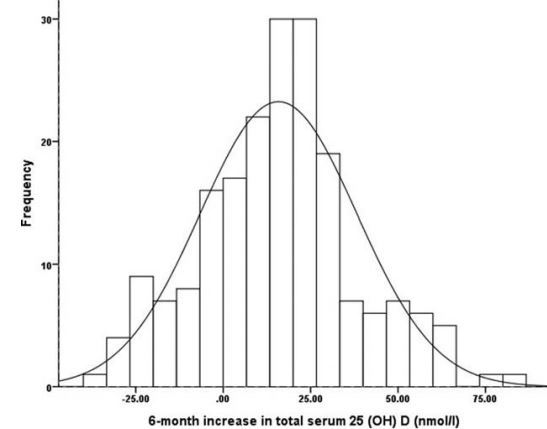High-Doses (50,000 IU weekly, etc.) if at high risk of Vitamin D deficiency
Daily and Weekly "High Doses" of Cholecalciferol for the Prevention and Treatment of Vitamin D Deficiency for Obese or Multi-Morbidity and Multi-Treatment Patients Requiring Multi-Drugs-A Narrative Review
Nutrients. 2024 Aug 3;16(15):2541. doi: 10.3390/nu16152541.
Pawel Pludowski 1, Ewa Marcinowska-Suchowierska 2 3, Galymzhan Togizbayev 4, Zhanna Belaya 5, William B Grant 6, Stefan Pilz 7, Michael F Holick 8
Abstract
Daily vitamin D supplementation using higher than normal dosing (up to the upper limit value) and intermittent (once or twice per week) dosing were studied in patients with increased risk of vitamin D deficiency. Using a PubMed database, a thorough search for published randomized controlled trials and other studies was conducted, and the results were analyzed. This review provides an overview of the use of 7000 IU daily, 30,000 IU per week or twice weekly, and 50,000 IU weekly of vitamin D for obtaining and maintaining 25(OH)D concentrations of at least 30 ng/mL in patients at high risk of vitamin D deficiency. The abovementioned dosages should be considered in adults with obesity, liver disease or malabsorption syndromes, or multi-diseased patients, mainly seniors requiring multi-drug treatment, including drugs affecting vitamin D metabolism. The simple schedules of 7000 IU/day, 30,000 IU/week or twice weekly, and 50,000 IU/week for use by patients with an increased risk of vitamin D deficiency were provided for consideration. Without monitoring of 25(OH)D, daily doses of 7000 IU or intermittent doses of 30,000 IU/week should be considered for a prolonged time as prophylactic or maintenance doses, mainly in obese patients, patients with liver disease and patients with malabsorption syndromes. For the treatment of possible vitamin D deficiency without assessment of 25(OH)D in these groups, intermittent doses of 30,000 IU twice weekly or 50,000 IU per week should be considered for a 6-8-week period only. The higher daily doses or the intermittent doses suggested above are effective, safe and responsive based on patient's preferences.
📄 Download the PDF from VitaminDWiki
Summary by Perplexity AI Aug 2024
The attached document discusses the use of high-dose vitamin D supplementation, specifically 7,000 IU daily or 50,000 IU weekly, for individuals at high risk of vitamin D deficiency. These high-risk groups include:
Obese individuals : Obesity is linked to vitamin D deficiency due to factors such as limited sun exposure, poor dietary habits, sequestration in adipose tissue, and impaired hepatic hydroxylation. For obese patients, a daily dose of 7,000 IU or a weekly dose of 50,000 IU of vitamin D is recommended as part of a long-term maintenance strategy.
Patients with liver disease or malabsorption syndromes : Liver diseases and malabsorption disorders can significantly impair vitamin D metabolism and absorption. Such patients are advised to take 7,000 IU daily or 50,000 IU weekly to manage deficiency. These doses are suggested to be safe and effective for maintaining adequate vitamin D levels.
Elderly individuals with multi-morbidity and polypharmacy : Older adults, especially those with multiple health conditions and on various medications, often have decreased vitamin D levels. For these individuals, 7,000 IU daily or 50,000 IU weekly can be used to prevent deficiency and maintain proper vitamin D status.
For the treatment of vitamin D deficiency, the document suggests using intermittent doses of 30,000 IU twice weekly or 50,000 IU weekly for a period of 6-8 weeks. After this initial treatment period, a maintenance dose of 7,000 IU daily or 30,000 IU weekly is recommended for a prolonged time to prevent recurrence of deficiency. These dosing regimens are considered effective and safe, but it is important that they are administered under medical supervision to avoid potential toxicity, especially in individuals outside these high-risk categories.
High Risk Groups in the Study
| Risk Groups | Diseases, Comorbid Conditions and Lifestyles |
| Multi-diseases and multi-drugs | All/selected diseases or conditions listed below, with treatments |
| Obesity disease | Obesity and overweight (and dyslipidemia) |
| Absorption disorders | Exocrine pancreatic insufficiency (old age, pancreatitis, type 2 diabetes, etc.), inflammatory bowel disease (Crohn's disease and ulcerative colitis), cystic fibrosis, celiac disease, bariatric surgery |
| Liver and bile duct diseases | Liver failure, liver cirrhosis, cholestasis, fatty liver disease |
| Endocrine and metabolic diseases/disorders | Type 1 and 2 diabetes, metabolic syndrome, hypoparathyroidism and hyperparathyroidism, hypertension, polycystic ovary syndrome |
| Eating habits and age | Veganism and other types of vegetarianism, low-fat diet, senior age with multi-morbidities and polypharmacy |
| Diseases of the musculoskeletal system | Rickets, osteoporosis, osteopenia, bone pain, myalgia, myopathy, muscular dystrophy, recurrent low-energy bone fractures, repeated falls, deformities |
Study recommends high-dose for 6-8 weeks, but RCTs have used 50K weekly dosing for many months
50,000 IU of Vitamin D - many studies
VitaminDWiki
1 pill every two weeks fights all of the following
{include}
Health problems fought by 50,000 IU weekly
{include}
Chart of response of obese to 50K weekly for 8 weeks
from Response by obese to weekly 50,000 IU of Vitamin D – May 2018

Suspected improvement in vitamin D levels for a population after 50,000 IU weekly

click here for more information
Almost 2 months to fully respond to 50,000 IU weekly

Take 50,000 IU of Vitamin D weekly for 2-4 months, then get a test - Dec 2021
High Risk category contains:
{include}
The only successful 7,000 IU trial lasted 12 months (not 2 months)
Treatment of HIV in youths helped by 7,000 IU of vitamin D for 1 year – RCT July 2014
This study fails to mention the importance of Loading doses to quickly restore levels
{include}
Suspected much faster response than 50K weekly using a loading dose

